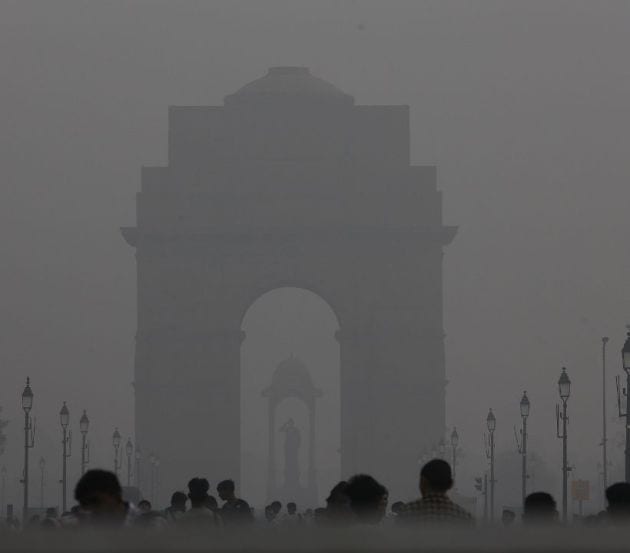Delhi sees season‘s first fog leading to flight delays, diversions
At Indira Gandhi International Airport, visibility dropped to just 50 meters by 9:30 am, leading to the diversion of seven flights—six to Jaipur and one to Lucknow.
 1 / 8
1 / 8A hazy view of India Gate captured the city's atmosphere as the AQI reached 370 by 10 am. (Express Photo by Tashi Tobgyal)
You have exhausted your
monthly limit of free stories.Read more stories for free
with an Express account.Already have an account? Sign InThis story requires a subscriptionSelect a plan and use IE10 code to get 10% extra offAlready a subscriber? Sign inThis story requires a subscriptionSelect a plan and use IE10 code to get 10% extra offThis content is exclusive for our subscribers.Subscribe now to get unlimited access to The Indian Express exclusive and premium stories.Already a subscriber? Sign In- 2 / 8
On Wednesday morning, Delhi experienced its first dense smog episode of the season, with the deteriorating air quality reducing visibility across the city and leading to multiple flight diversions. (Express Photo by Tashi Tobgyal)
- 3 / 8
The Indian Institute of Tropical Meteorology has warned that the weather conditions will remain highly unfavorable for the dispersal of pollutants in the coming days (Express Photo by Tashi Tobgyal)
- 4 / 8
In this picture, thick gray haze blankets Kartavya Path. Meanwhile, at Indira Gandhi International Airport, visibility dropped to just 50 meters by 9:30 am, resulting in the diversion of seven flights (Express Photo by Tashi Tobgyal)
- 5 / 8
IMD forecasts that dense to very dense fog will continue to blanket parts of Delhi on Wednesday. From Friday, November 15 to November 19, moderate fog or smog is expected in the mornings, with smog or mist likely in the evenings.(Express Photo by Tashi Tobgyal)
- 6 / 8
IMD scientist R.K. Jenamani explained that the fog conditions in Delhi have intensified, with smog lingering longer throughout the day, potentially blocking sunlight and causing a drop in maximum temperatures. (Express Photo by Tashi Tobgyal)
- 7 / 8
- 8 / 8
The most polluted areas of the city were Aya Nagar, with an AQI of 428, and Anand Vihar, with an AQI of 413, both in the 'severe' category. In this photo, commuters can be seen navigating through the thick fog, highlighting the impact of the poor air quality on daily life. (Express Photo by Tashi Tobgyal)